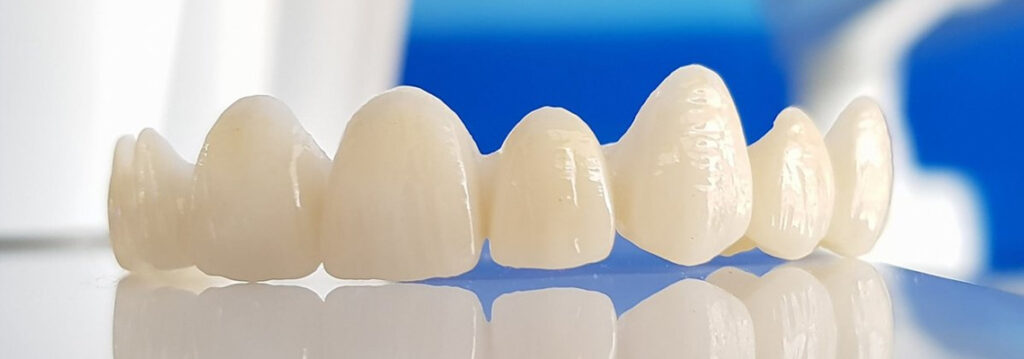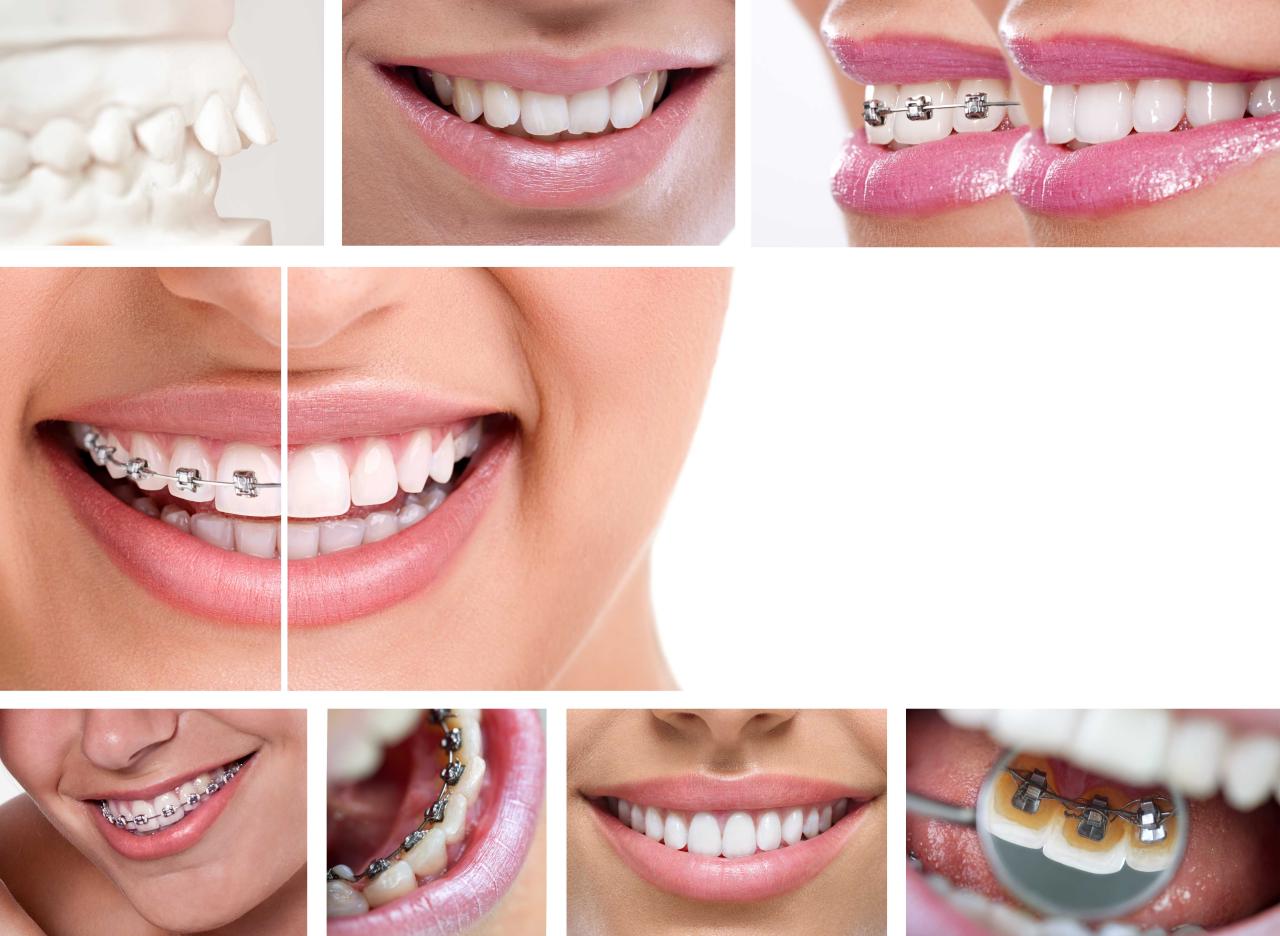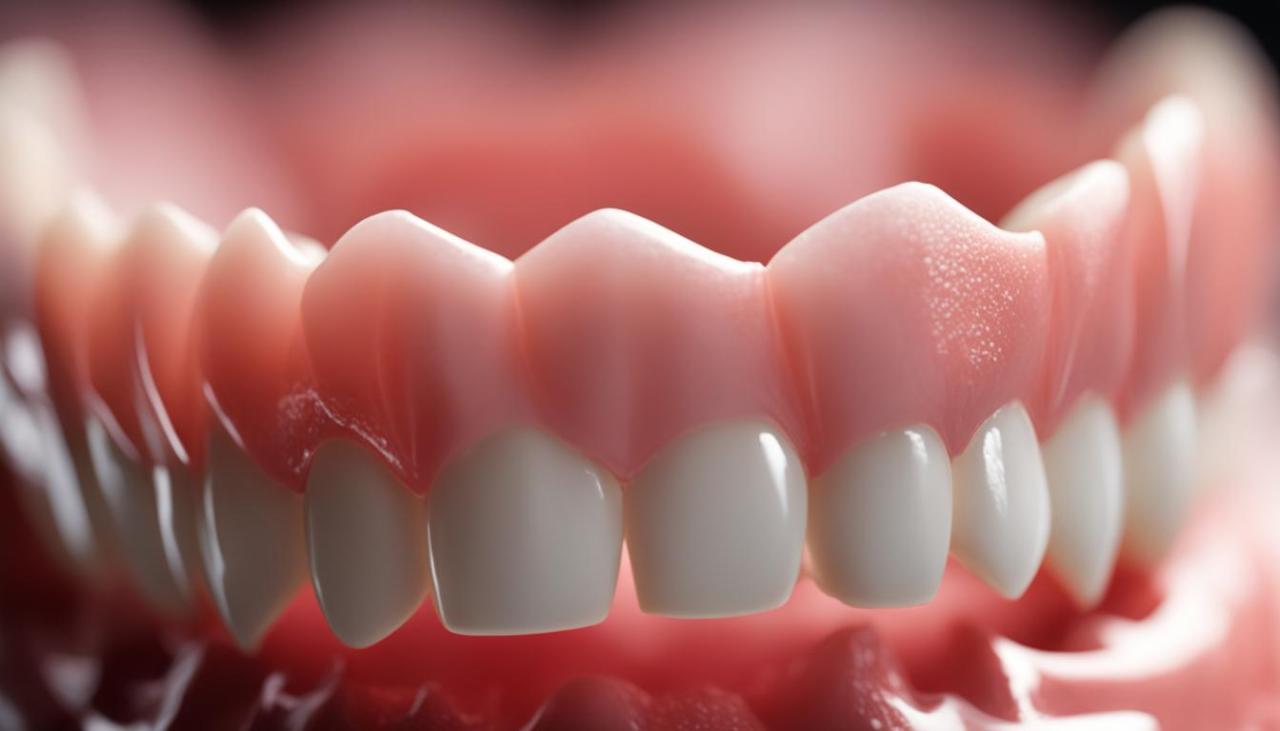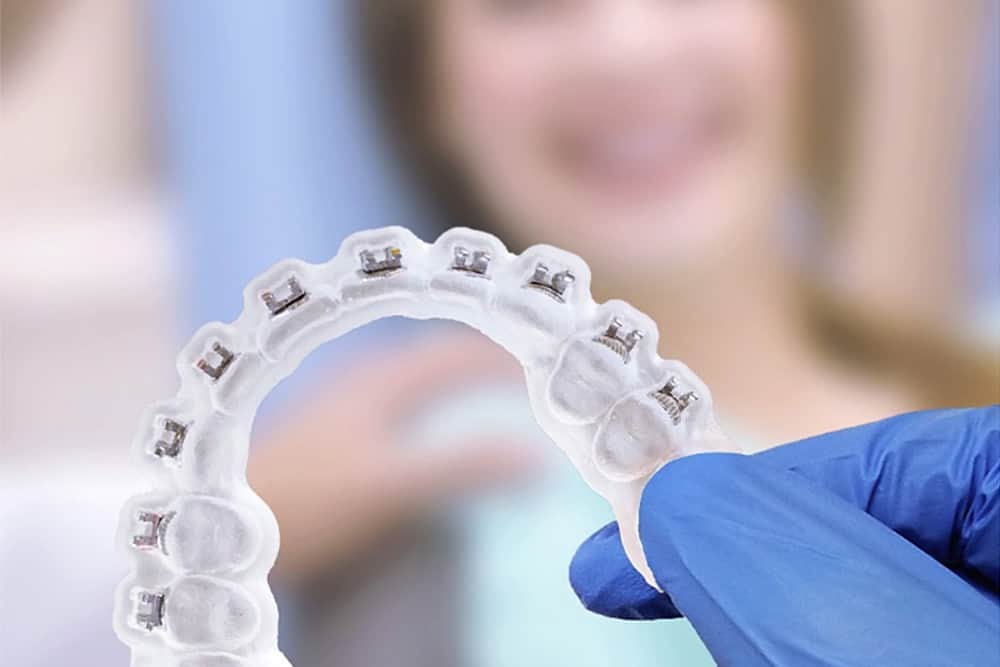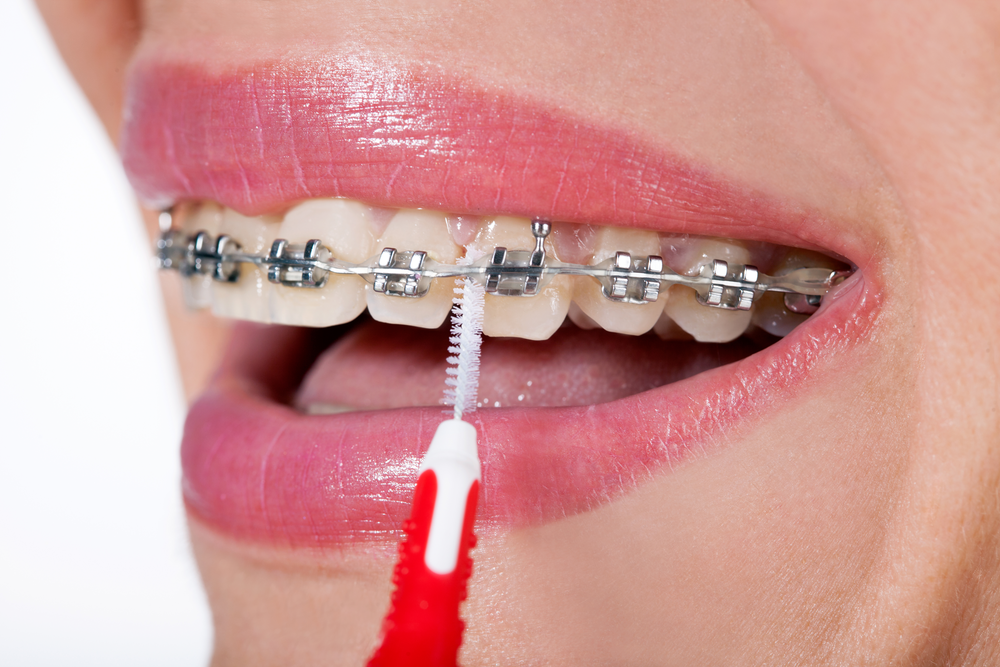Denture Technology: A Journey Through Innovation
Denture technology, a fascinating field, has undergone a remarkable evolution, transforming from rudimentary designs to sophisticated, personalized solutions. From the early days of simple replacements to modern advancements in materials […]

Denture technology, a fascinating field, has undergone a remarkable evolution, transforming from rudimentary designs to sophisticated, personalized solutions. From the early days of simple replacements to modern advancements in materials and fabrication techniques, dentures have played a vital role in restoring oral function and aesthetics for countless individuals.
This exploration delves into the history, types, design, care, and future of denture technology, highlighting its impact on oral health and the exciting possibilities that lie ahead. We will examine the different types of dentures, including full dentures, partial dentures, and overdentures, discussing their advantages and disadvantages. We will also explore the intricate process of denture fabrication, from initial impressions to the final fitting, shedding light on the role of digital technologies and dental professionals.
Evolution of Denture Technology
The history of dentures spans centuries, evolving from rudimentary designs to sophisticated modern prosthetics. This evolution reflects advancements in materials, manufacturing techniques, and understanding of oral health.
Early Dentures
Early dentures were often crafted from materials like wood, bone, or ivory. These early designs were primarily functional, offering limited aesthetic appeal. The Etruscans, known for their skilled craftsmanship, created dentures from ivory and gold around 700 BC. These dentures were rudimentary but demonstrated a remarkable understanding of dental structure. In the 16th century, the development of porcelain allowed for more aesthetically pleasing dentures.
Key Innovations in Denture Technology
The 18th century witnessed significant innovations in denture technology.
- The invention of vulcanized rubber in 1839 revolutionized denture materials. Rubber was more durable and flexible than previous materials, allowing for more comfortable and realistic dentures.
- The introduction of acrylic resin in the 20th century further transformed denture technology. Acrylic resin offered a combination of strength, durability, and aesthetic appeal, making it the dominant material for dentures.
- The development of implant-supported dentures in the late 20th century marked a significant advancement. Implants provide a stable base for dentures, offering improved stability, comfort, and retention.
Denture Materials: A Comparison
Denture materials have evolved significantly, with each material offering unique advantages and disadvantages.
| Material | Advantages | Disadvantages |
|---|---|---|
| Acrylic | Durable, affordable, aesthetically pleasing | Can be brittle, susceptible to staining |
| Nylon | Flexible, comfortable, durable | Can be less aesthetically pleasing, prone to discoloration |
| Titanium | Strong, biocompatible, durable | Expensive, requires specialized fabrication |
Types of Dentures
Dentures are removable prosthetic devices that replace missing teeth. They can be either partial or full, depending on the number of teeth that need to be replaced. Dentures are a common solution for tooth loss and can significantly improve a person’s ability to eat, speak, and smile.
There are different types of dentures available, each with its own advantages and disadvantages. The choice of denture type depends on factors such as the patient’s individual needs, the severity of their tooth loss, and their budget.
Full Dentures
Full dentures are used when all teeth in the upper or lower jaw are missing. They are made of acrylic or nylon and are custom-fitted to the patient’s mouth.
Advantages of Full Dentures
- Full dentures are a cost-effective solution for replacing all teeth.
- They are relatively easy to care for and can be removed for cleaning.
- Full dentures can improve a person’s appearance and confidence.
Disadvantages of Full Dentures
- Full dentures can be loose or unstable, especially during the first few weeks after insertion.
- They may require adjustments as the underlying bone structure changes over time.
- Full dentures can affect the taste and speech.
Partial Dentures, Denture technology
Partial dentures are used when some teeth are still present in the mouth. They are made of acrylic or metal and are designed to fit around the remaining teeth.
Advantages of Partial Dentures
- Partial dentures are a more conservative option than full dentures, as they preserve the remaining teeth.
- They are generally more stable than full dentures.
- Partial dentures can be customized to match the patient’s natural teeth.
Disadvantages of Partial Dentures
- Partial dentures can be more expensive than full dentures.
- They may require more frequent adjustments than full dentures.
- Partial dentures can be uncomfortable for some patients.
Overdentures
Overdentures are a type of denture that is supported by implants placed in the jawbone. They are typically used when there is significant bone loss, making it difficult to retain traditional dentures.
Advantages of Overdentures
- Overdentures are more stable and secure than traditional dentures.
- They can preserve the underlying bone structure.
- Overdentures allow for more natural chewing and speaking.
Disadvantages of Overdentures
- Overdentures are more expensive than traditional dentures due to the cost of implants.
- They require a surgical procedure to place the implants.
- Overdentures may require more maintenance than traditional dentures.
Comparison of Denture Types
| Denture Type | Key Features | Pros | Cons |
|---|---|---|---|
| Full Dentures | Replace all teeth in the upper or lower jaw | Cost-effective, easy to care for, improve appearance | Loose or unstable, require adjustments, affect taste and speech |
| Partial Dentures | Replace some teeth in the upper or lower jaw | More conservative, generally more stable, customizable | More expensive, require more frequent adjustments, can be uncomfortable |
| Overdentures | Supported by implants placed in the jawbone | More stable and secure, preserve bone structure, more natural chewing and speaking | More expensive, require surgery, more maintenance |
Denture Design and Fabrication

Denture fabrication is a meticulous process that involves a series of steps, starting from the initial impressions to the final fitting of the denture. It requires a combination of technical expertise and artistic skill to create a functional and aesthetically pleasing prosthesis.
The Denture Fabrication Process
The process of fabricating a denture is a multi-step procedure that involves the collaboration of dental professionals, including dentists and dental technicians. Here’s a breakdown of the key stages:
- Initial Impressions: The process begins with taking impressions of the patient’s mouth using alginate or other impression materials. These impressions capture the shape and contours of the patient’s remaining teeth, gums, and palate, providing a 3D representation of the oral cavity.
- Model Construction: From the impressions, a dental technician creates a plaster or stone model of the patient’s mouth. This model serves as a guide for designing and fabricating the denture.
- Tooth Selection and Setup: The dentist selects the appropriate size, shape, and color of artificial teeth based on the patient’s facial aesthetics and existing dentition. These teeth are then meticulously arranged on the model to achieve a natural and harmonious appearance.
- Wax Try-in: A wax model of the denture is fabricated and fitted into the patient’s mouth for a try-in. This step allows the dentist and patient to evaluate the fit, occlusion, and aesthetics of the denture before proceeding with the final fabrication.
- Denture Processing: The wax model is then invested in a mold and heated to melt the wax. The space is then filled with a denture base material, typically acrylic resin, and cured under heat and pressure. The denture base is then polished and finished to create a smooth and comfortable surface.
- Final Fitting and Adjustments: Once the denture is fabricated, the dentist fits it into the patient’s mouth and makes any necessary adjustments to ensure a comfortable and functional fit. This may involve adjusting the denture base, teeth, or occlusion to optimize the fit and function.
Digital Technologies in Denture Fabrication
Digital technologies have revolutionized the field of denture fabrication, offering significant advantages in terms of precision, efficiency, and aesthetics.
- CAD/CAM Technology: Computer-aided design and computer-aided manufacturing (CAD/CAM) systems allow for the creation of highly accurate and customized dentures. Digital impressions are taken using intraoral scanners, and the data is used to create a 3D model of the patient’s mouth. This digital model is then used to design and fabricate the denture using specialized software and milling machines.
- 3D Printing: 3D printing technology is increasingly being used in denture fabrication, particularly for the creation of temporary dentures and custom denture bases. This technology allows for the creation of complex and intricate designs with high accuracy and detail.
Role of Dental Technicians and Prosthodontists
Dental technicians and prosthodontists play crucial roles in the design and fabrication of dentures.
- Dental Technicians: Dental technicians are skilled professionals who fabricate dentures based on the dentist’s instructions. They are responsible for constructing the denture base, arranging the teeth, and ensuring the accuracy and aesthetics of the prosthesis.
- Prosthodontists: Prosthodontists are dentists who specialize in the restoration and replacement of teeth. They are responsible for diagnosing the patient’s needs, planning the denture design, and supervising the fabrication process.
Denture Retention and Stability
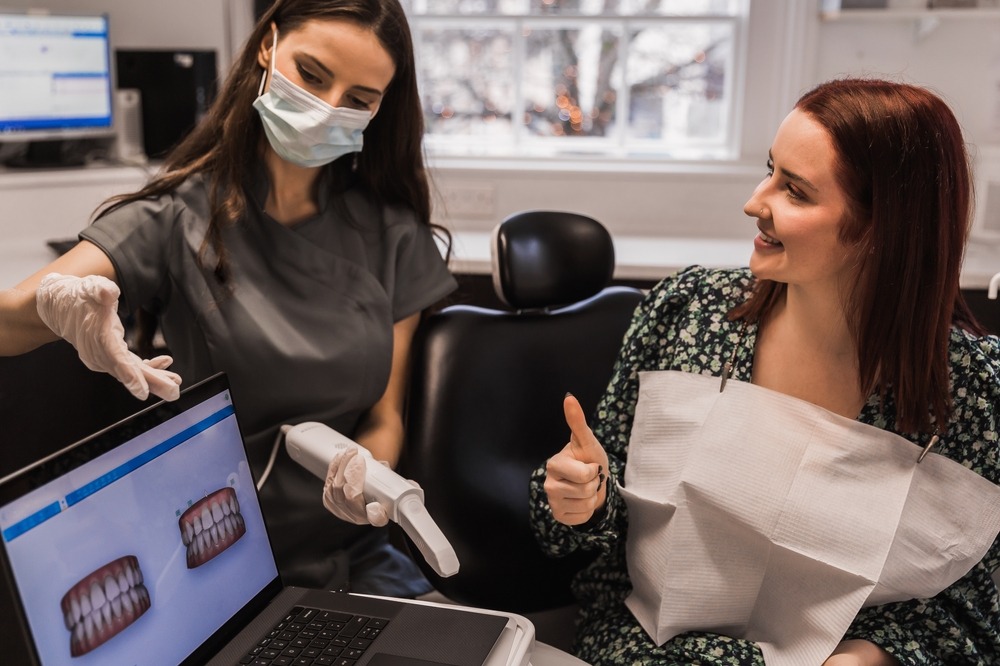
Denture retention and stability are crucial for the success of any denture treatment. Retention refers to the ability of the denture to stay in place during normal activities, while stability refers to the denture’s resistance to movement or displacement. Understanding the factors that contribute to denture retention and stability is essential for dentists and patients alike.
Mechanisms of Denture Retention
Denture retention relies on a combination of physical and mechanical principles. The primary mechanisms include:
- Adhesion: This occurs due to the attraction between the denture base and the moist tissues of the mouth. The saliva acts as a lubricant, creating a thin film that helps the denture adhere to the tissues.
- Suction: When the denture is placed in the mouth, air is trapped between the denture base and the tissues. As the denture is seated, the air is displaced, creating a negative pressure that helps hold the denture in place.
- Mechanical Retention: This involves the use of physical structures, such as clasps or attachments, to secure the denture to the remaining teeth. These structures help prevent the denture from dislodging during chewing or speaking.
Denture Adhesives
Denture adhesives are topical products that can enhance denture retention by increasing adhesion between the denture base and the tissues. They work by filling in gaps between the denture and the tissues, creating a smoother surface that reduces friction and improves the seal. Denture adhesives can also help to cushion the denture, reducing discomfort and irritation.
Common Problems Related to Denture Retention
Several factors can contribute to poor denture retention, including:
- Loss of Bone: As we age, the jawbone can shrink, leading to a decrease in the area available for denture support. This can make it difficult for the denture to stay in place.
- Changes in Oral Tissues: The tissues in the mouth can change over time, becoming thinner or more wrinkled. This can also affect denture retention.
- Poor Oral Hygiene: Poor oral hygiene can lead to the buildup of plaque and bacteria, which can irritate the tissues and make it difficult for the denture to adhere.
- Ill-fitting Denture: A denture that is not properly fitted can move around in the mouth, leading to discomfort and instability.
- Dry Mouth: Dry mouth can reduce the effectiveness of denture adhesives and make it more difficult for the denture to stay in place.
Solutions for Addressing Denture Retention Problems
Several solutions can help address problems with denture retention:
- Relining or Rebasing: A denture that has become loose or ill-fitting can be relined or rebased to improve its fit. Relining involves adding a thin layer of material to the denture base, while rebasing involves replacing the entire base.
- Implant-Supported Dentures: For patients with significant bone loss, implant-supported dentures can provide a more secure and stable solution. Implants are surgically placed into the jawbone, providing a strong anchor for the denture.
- Improved Oral Hygiene: Maintaining good oral hygiene is essential for denture retention. This includes brushing the dentures daily, cleaning the mouth regularly, and visiting the dentist for regular checkups.
- Denture Adhesives: Denture adhesives can help to improve denture retention and stability. However, it is important to use them according to the manufacturer’s instructions and to avoid overuse.
Denture Care and Maintenance
Denture care is crucial for maintaining oral health and extending the lifespan of your dentures. Proper cleaning, soaking, and storage practices are essential to prevent damage, bacterial growth, and discomfort. This section will guide you through a comprehensive denture care routine, including tips for preventing damage and ensuring regular professional checkups.
Daily Cleaning
Cleaning your dentures daily is essential to remove food debris, plaque, and bacteria that can cause bad breath, irritation, and infections.
- Brush gently with a soft-bristled toothbrush and denture cleaner. Avoid using harsh abrasive cleaners or toothpaste, as these can scratch the denture surface.
- Rinse thoroughly with water after brushing to remove any remaining cleaner.
- Soak dentures overnight in a denture cleaning solution. This helps to remove stubborn stains and bacteria. Follow the manufacturer’s instructions for soaking time and solution type.
- Clean your mouth thoroughly with a soft-bristled toothbrush and fluoride toothpaste. This removes any remaining food particles or bacteria on your gums and tongue.
Soaking and Storage
Soaking your dentures overnight helps to keep them clean and hydrated, preventing them from becoming brittle or warped.
- Use a denture soaking solution specifically designed for dentures. Avoid using bleach or other harsh chemicals, which can damage the dentures.
- Store dentures in a cool, dry place when not in use. A denture case with a tight-fitting lid is ideal to protect them from dust and accidental drops.
- Remove dentures before going to bed. This allows your gums to rest and helps prevent irritation.
- Never store dentures in hot water. Heat can warp or damage the dentures.
Denture Damage Prevention
Dentures, like any other oral appliance, can be prone to damage if not handled with care.
- Handle dentures with care. Avoid dropping them or placing them on hard surfaces. A soft towel or denture case can protect them from accidental falls.
- Avoid extreme temperatures. Heat can warp or damage the dentures, while cold can make them brittle. Store them at room temperature.
- Don’t use abrasive cleaners. Harsh cleaners can scratch the denture surface, making them more susceptible to bacteria and staining.
- Avoid chewing hard or sticky foods. This can put stress on the dentures and lead to cracks or breakage.
Regular Denture Checkups
Regular checkups and adjustments are essential to ensure your dentures fit properly and remain comfortable.
- Visit your dentist for a checkup every six months. This allows your dentist to inspect your dentures for wear and tear, make any necessary adjustments, and ensure they are still fitting properly.
- Schedule an appointment with your dentist immediately if you experience any discomfort, pain, or changes in fit.
Impact of Denture Technology on Oral Health
Denture technology has revolutionized the lives of millions by restoring oral function and aesthetics, improving their quality of life. However, understanding the potential benefits and risks associated with dentures is crucial for maintaining good oral health. This section delves into the impact of denture technology on oral health, exploring both its advantages and potential complications.
Benefits of Dentures
Dentures offer numerous benefits, improving oral function and aesthetics, leading to a positive impact on overall well-being.
- Improved Chewing and Speech: Dentures restore chewing ability, allowing individuals to enjoy a wider range of foods and improve their dietary intake. They also enhance speech clarity, boosting confidence and social interactions.
- Enhanced Aesthetics: Dentures can significantly improve the appearance of a smile, replacing missing teeth and restoring facial contours. This can boost self-esteem and confidence, enhancing social interactions and overall quality of life.
- Improved Oral Health: Dentures can prevent further tooth loss by distributing biting forces more evenly across the remaining teeth and supporting the jawbone. They can also prevent the shifting of remaining teeth, maintaining proper alignment and bite.
Potential Risks and Complications
While dentures offer numerous benefits, it’s essential to be aware of potential risks and complications associated with their use.
- Irritation and Soreness: Dentures can cause irritation and soreness in the mouth, particularly during the initial adjustment period. This is often due to ill-fitting dentures or poorly fitting dentures. Regular checkups and adjustments with a dentist are essential to minimize discomfort.
- Infection: Poor oral hygiene practices or ill-fitting dentures can increase the risk of infection. Bacteria can accumulate under dentures, leading to gingivitis, periodontitis, or even fungal infections. Maintaining proper hygiene and regular dental checkups are crucial to prevent infections.
- Bone Loss: When teeth are missing, the jawbone begins to resorb, as it loses stimulation from the teeth. This can lead to facial changes and affect denture fit over time. Regular dental checkups and bone grafting procedures can help manage bone loss.
Maintaining Good Oral Hygiene
Maintaining good oral hygiene is essential for denture wearers to prevent complications and ensure the longevity of their dentures.
- Regular Brushing and Cleaning: Clean dentures daily with a soft-bristled brush and denture cleanser. Avoid using harsh abrasives or bleach, as they can damage the dentures.
- Mouth Care: Brush your tongue and gums regularly, using a soft-bristled toothbrush and fluoride toothpaste. This helps remove bacteria and food particles, preventing infections and promoting oral health.
- Regular Dental Checkups: Visit your dentist regularly for checkups and professional cleanings. This allows your dentist to monitor your oral health, adjust dentures, and address any potential problems early on.
Managing Potential Denture-Related Issues
If you experience any discomfort, irritation, or other issues with your dentures, consult your dentist immediately. They can assess the situation and recommend appropriate solutions, such as:
- Denture Relining: This involves adding a thin layer of material to the denture base to improve fit and comfort. It can address issues related to denture movement and irritation.
- Denture Adjustment: Your dentist can adjust the fit of your dentures by removing or adding material, ensuring proper alignment and comfort.
- New Denture Fabrication: If your dentures are significantly worn, damaged, or no longer fit properly, your dentist may recommend new dentures. This can improve function, aesthetics, and overall oral health.
Future Trends in Denture Technology
The field of denture technology is constantly evolving, driven by advancements in materials science, digital fabrication, and personalized medicine. These innovations are leading to more comfortable, stable, and aesthetically pleasing dentures that enhance the quality of life for denture wearers.
3D Printing and Digital Denture Fabrication
3D printing, also known as additive manufacturing, is revolutionizing denture fabrication. This technology allows for the creation of highly customized dentures with intricate designs and complex geometries.
- Increased Accuracy and Precision: 3D printing enables the creation of dentures with precise fit and alignment, minimizing the need for adjustments and improving comfort. This technology eliminates the need for traditional denture molds, which can be prone to inaccuracies.
- Faster Fabrication Time: 3D printing significantly reduces the time required to fabricate dentures, making them more accessible to patients. It also enables the production of multiple dentures from a single scan, streamlining the process.
- Enhanced Aesthetics: 3D printing allows for the creation of dentures with lifelike appearance and natural tooth shapes. It enables the fabrication of dentures with custom-designed gum contours and tooth arrangements, enhancing the overall aesthetics.
- Improved Durability: 3D printing allows for the use of advanced materials, such as biocompatible polymers and composites, that are durable and resistant to wear and tear. These materials can withstand the forces of chewing and biting, extending the lifespan of dentures.
Personalized Denture Design
The future of denture technology lies in personalized solutions that cater to individual needs and preferences. This involves incorporating advanced technologies and techniques to create dentures that are tailored to each patient’s unique anatomy, oral health, and lifestyle.
- Digital Impression Scanning: Digital impression scanning using intraoral scanners eliminates the need for traditional impression trays, which can be uncomfortable and time-consuming. These scanners capture detailed 3D images of the patient’s mouth, enabling precise denture design.
- Biometric Analysis: Biometric analysis involves collecting data about a patient’s facial features, bite patterns, and muscle movements to create dentures that are perfectly aligned and comfortable. This data can be used to optimize denture design for improved retention and stability.
- Patient-Specific Materials: The use of patient-specific materials, such as biocompatible polymers and composites, allows for the creation of dentures that are customized to individual needs. These materials can be tailored for specific levels of flexibility, strength, and aesthetic appeal.
- Virtual Try-On: Virtual try-on technology allows patients to visualize their dentures before they are fabricated. This enables them to make informed decisions about the design and aesthetics of their dentures and ensure they are satisfied with the final outcome.
Research and Development Efforts
Ongoing research and development efforts are focused on improving denture comfort, stability, and longevity. These efforts aim to address the challenges associated with denture wear, such as gum irritation, bone loss, and difficulty chewing.
- Biocompatible Materials: Researchers are developing biocompatible materials that mimic the properties of natural teeth and gums. These materials are designed to be more comfortable and less irritating to the oral tissues, improving the overall denture experience.
- Improved Retention and Stability: Innovative designs and materials are being investigated to enhance denture retention and stability. These include implants, magnets, and other attachment systems that provide a secure fit and minimize denture movement.
- Bone Regeneration: Research is underway to develop methods for stimulating bone regeneration in the jawbone, which can help prevent bone loss and improve denture stability. These methods include bone grafting and the use of growth factors.
- Denture Implants: Implant-supported dentures are becoming increasingly popular, offering a more stable and secure alternative to traditional dentures. Implants are surgically placed into the jawbone, providing a solid foundation for dentures.
Epilogue: Denture Technology
As denture technology continues to advance, we can expect even more personalized, comfortable, and long-lasting solutions. From innovative materials and 3D printing to advancements in biocompatibility, the future of dentures holds exciting possibilities for improving oral health and enhancing the quality of life for individuals seeking to restore their smiles.
Denture technology has advanced significantly, offering comfortable and natural-looking replacements for missing teeth. This progress has led to a growing demand for skilled professionals in the dental field, including those specializing in denture technology. For those seeking careers in this exciting area, exploring opportunities with technology recruiters in the Bay Area could be a great starting point.
These recruiters specialize in connecting talented individuals with leading companies in the dental technology sector, providing access to a wide range of exciting positions.
